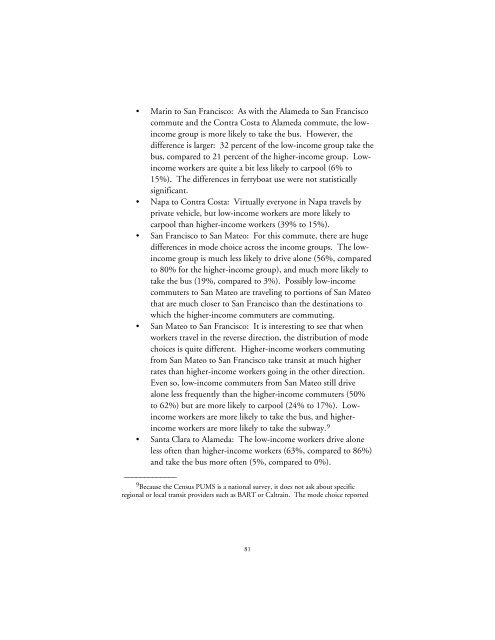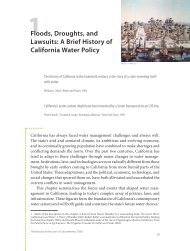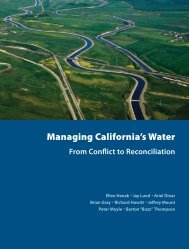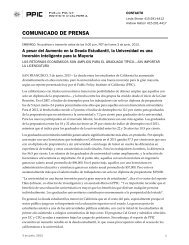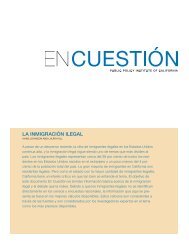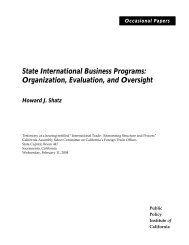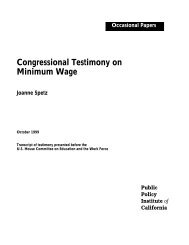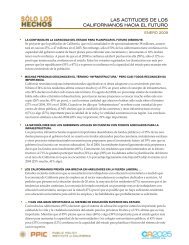Transportation Spending by Low-Income California Households ...
Transportation Spending by Low-Income California Households ...
Transportation Spending by Low-Income California Households ...
Create successful ePaper yourself
Turn your PDF publications into a flip-book with our unique Google optimized e-Paper software.
• Marin to San Francisco: As with the Alameda to San Francisco<br />
commute and the Contra Costa to Alameda commute, the lowincome<br />
group is more likely to take the bus. However, the<br />
difference is larger: 32 percent of the low-income group take the<br />
bus, compared to 21 percent of the higher-income group. <strong>Low</strong>income<br />
workers are quite a bit less likely to carpool (6% to<br />
15%). The differences in ferryboat use were not statistically<br />
significant.<br />
• Napa to Contra Costa: Virtually everyone in Napa travels <strong>by</strong><br />
private vehicle, but low-income workers are more likely to<br />
carpool than higher-income workers (39% to 15%).<br />
• San Francisco to San Mateo: For this commute, there are huge<br />
differences in mode choice across the income groups. The lowincome<br />
group is much less likely to drive alone (56%, compared<br />
to 80% for the higher-income group), and much more likely to<br />
take the bus (19%, compared to 3%). Possibly low-income<br />
commuters to San Mateo are traveling to portions of San Mateo<br />
that are much closer to San Francisco than the destinations to<br />
which the higher-income commuters are commuting.<br />
• San Mateo to San Francisco: It is interesting to see that when<br />
workers travel in the reverse direction, the distribution of mode<br />
choices is quite different. Higher-income workers commuting<br />
from San Mateo to San Francisco take transit at much higher<br />
rates than higher-income workers going in the other direction.<br />
Even so, low-income commuters from San Mateo still drive<br />
alone less frequently than the higher-income commuters (50%<br />
to 62%) but are more likely to carpool (24% to 17%). <strong>Low</strong>income<br />
workers are more likely to take the bus, and higherincome<br />
workers are more likely to take the subway. 9<br />
• Santa Clara to Alameda: The low-income workers drive alone<br />
less often than higher-income workers (63%, compared to 86%)<br />
and take the bus more often (5%, compared to 0%).<br />
_____________<br />
9 Because the Census PUMS is a national survey, it does not ask about specific<br />
regional or local transit providers such as BART or Caltrain. The mode choice reported<br />
81


